Table of Contents
Darjeeling – Queen of the Hills
Spanning the foothills of the Eastern Himalayas, Darjeeling is a breathtaking hill station in West Bengal, India, with magnificent vistas, world-famous Darjeeling tea and Kanchenjunga (the world’s third-highest mountain). The ‘Queen of the Hills’ – Darjeeling is a popular destination that offers colonial panache, cultural diversity, and breathtaking views.
Darjeeling not only boasts scenic toy train rides, expansive tea gardens, Buddhist monasteries, and adventure activities, but it is also an experience encapsulated while on a trip here. Adventure seekers looking to trek in the Singalila range, nature lovers keen on seeing stunning sunrises from Tiger Hill, and history buffs preferring to explore British-era architecture will all find something of interest in Darjeeling.

Darjeeling, known for its cool weather, lush greenery, and rich combination of Nepali, Tibetan, and Bengali cultures, makes a perfect getaway from city life. The town’s vintage appeal, visible in its colonial-era constructions, dusty bookstores, and quaint cafés, is the perfect getaway for those wishing to kick back.
No matter what the occasion – be it a honeymoon, an adventure trip alone, or a family trip, the timeless beauty and picturesque landscapes of Darjeeling will leave you spellbound. This guide will cover the best Darjeeling places to visit, how to spend your time there, what to eat, travel tips, and Darjeeling’s best time to visit.
History of Darjeeling: From a Mystical Land to a Colonial Retreat
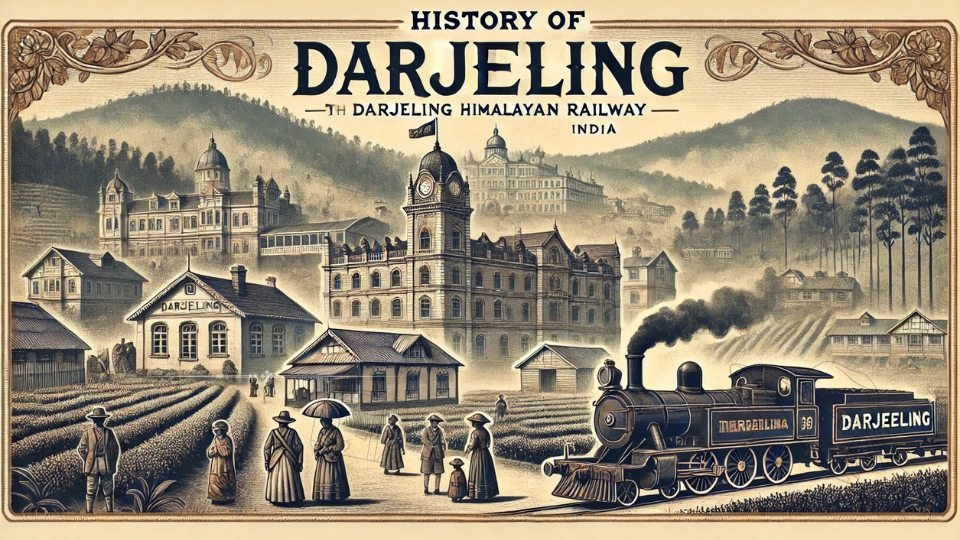
Darjeeling, the “Queen of the Hills”, has a rich history that goes back centuries. Located in the Lesser Himalayas, this scenic hill station in West Bengal, India, was once a dense forest where tribal folk lived. Over the course of the years, it has become one of the favorite places to visit in India due to its colonial legacy, world-famous tea gardens, and magnificent landscapes.
Ancient and Medieval History
Before the British came, the area of Darjeeling was almost deserted, and only occupied by some native tribes that are Lepcha and Limbu, who were the first settlers of that region. In the early 17th century, various Himalayan kingdoms ruled the land, including the Kingdom of Sikkim. During the 18th century, the Gorkhas of Nepal repeatedly invaded the region, resulting in Nepal-Sikkim warfare.
British Acquisition and Development (19th Century)
The modern history of Darjeeling began in 1828, when two British officers, Captain Lloyd and J.W. Grant, identified its strategic position and cool climate as a good site for a sanatorium (health resort). Then this region was ruled by the Chogyal (King) of Sikkim. In 1835, the British East India Company formally acquired Darjeeling from the Chogyal in return for an annual grant.
As it was under British rule, Darjeeling quickly emerged as a summer resort for British officials fleeing the oppressive heat in the Indian plains. The British established tea plantations in the mid-19th century, realizing the area’s perfect climate and altitude for producing fine-quality Darjeeling tea. Some tea estates were founded by the 1850s, but it drew migrant workers, especially from Nepal, who significantly contributed to the area’s tea output.
The year 1881 marked the magnificent feat of starting construction of the Darjeeling Himalayan Railway (DHR), popularly known as the Toy Train. Now a UNESCO World Heritage Site, the railway made Darjeeling more easily accessible and enhanced its reputation as a premier hill station in British India.
Darjeeling – Post Independence (1947 – Present)
When India gained independence in 1947, Darjeeling fell within West Bengal’s borders. Over decades, the area saw socio-political transformation, especially with the emergence of the Gorkhaland agitation seeking a separate state for the Nepali-speaking Gorkha community. Despite periodic political unrest its prosperity has continued to thrive, making Darjeeling one of India’s most popular hill stations.
Today, Darjeeling is a travel destination recognized worldwide for its spectacular views of the Himalayan range, globally renowned tea, cultural diversity, and British-era charm. From its Toy Train rides, green tea gardens, and centuries-old monasteries, to sunrise over Kanchenjunga, it never ceases to enchant visitors.
Iconic Attractions: Must-Visit Spots in Darjeeling
Darjeeling, the “Queen of the Hills,” is a treat for travelers looking for stunning views of the Himalayas, colonial ambiance, and a variety of cultural experiences. From being a nature lover to a history enthusiast to an adventure seeker to a tea connoisseur, there is something for everyone in the town of Darjeeling! Listed below are the attractions that one must visit in this alluring hill station.
1. Tiger Hill – See the Grand Sunrise
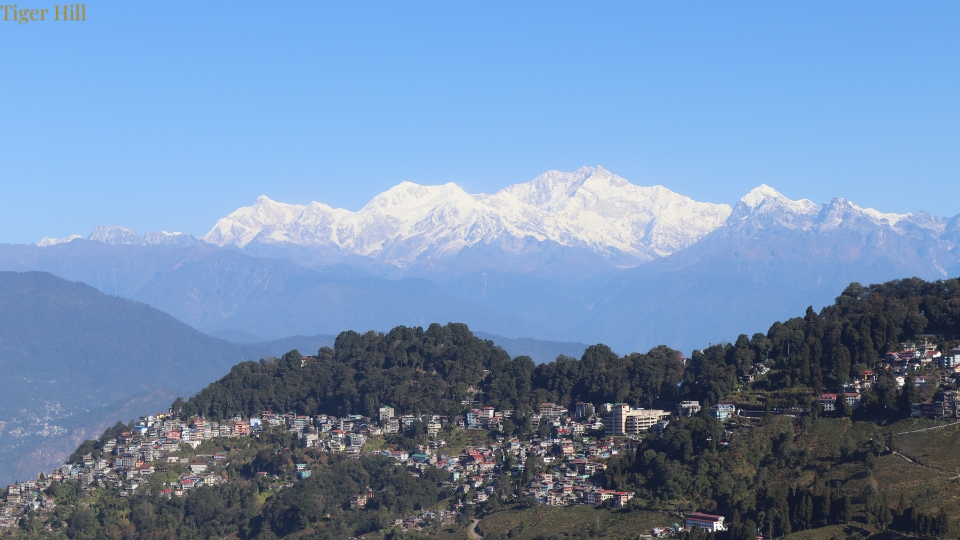
Tiger Hill, one of the most famous places to see in Darjeeling, is famous for its spectacular look of sunrise over Mount Kanchenjunga. On a fine day, you even can see Mount Everest in the background. It is an enchanting sight that attracts tourists from all corners of the world; watching the golden rays of the sun turning the snowy peaks pink.
Best Time to Visit:
- Early morning (4:00 AM – 6:00 AM) catching the sunrise at its best
- Most visited between October-December and March-May for clearer skies
2. Darjeeling Himalayan Railway (Toy Train) – A Heritage Ride by UNESCO

Visiting Darjeeling without a ride on the Darjeeling Himalayan Railway (DHR), better known as the Toy Train, is incomplete. Dating to 1881, this UNESCO World Heritage Site guides you through scenic landscapes, tea plantations, and misty hills.
Highlights:
The most well-known journey is from Darjeeling to the neighboring town of Ghoom, where you traverse the famed Batasia Loop, a spiral railway track that uniquely gives breathtaking looks at the mountains.
The nostalgic charm of British-era transportation is evident when getting there by way of a steam engine train.
- Best Time to Visit for Scenic Views: October to May
- Buy tickets ahead of time, particularly at peak season
3. Batasia Loop – A Panorama Marvel
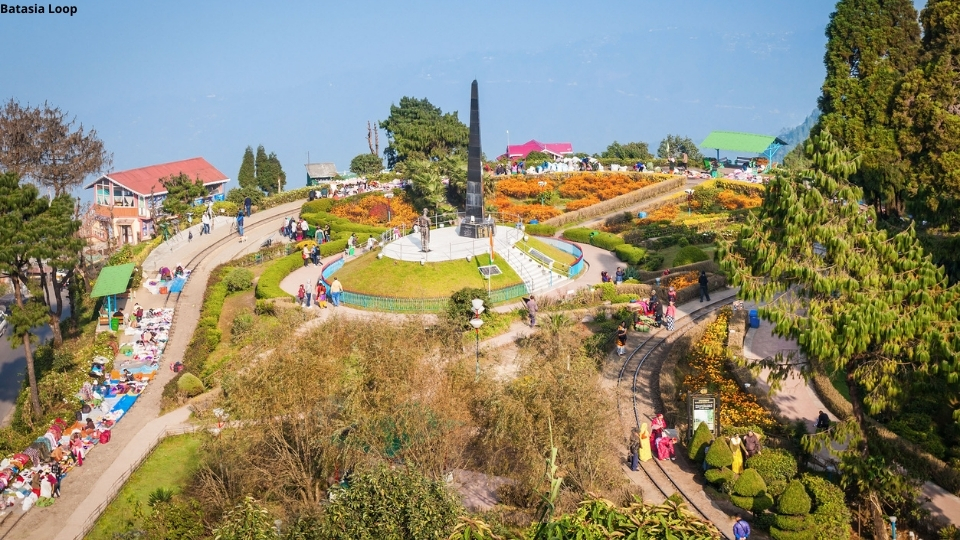
Batasia Loop — An architectural wonder where the Toy Train takes a spiral turn in a beautifully landscaped garden, located en route to Ghoom. It provides a 360-degree view of Darjeeling town, the hills around it, and Kanchenjunga behind.
Why Visit?
- It houses the Gorkha War Memorial in honor of the courageous soldiers that safeguarded the Indian Army.
- Perfect for photogenic lovers and nature fans.
4. Darjeeling Ropeway- Tea Gardens from Above

Darjeeling Ropeway, Raangeet Valley Cable Car in Darjeeling is a good hilltop site to see the aerial view of beautiful views of tea gardens, lush valleys, beautiful hills, and snowy mountain peaks. The ride between Singamari and Tukvar is 5 km long.
Why Take the Ride?
- Admire the tea gardens from above.
- Perfectly suited for families, honeymooners, and adventurers.
- Best Time to Visit:
- Open year-round, best in April to June to allow for clear views.
5. Padmaja Naidu Himalayan Zoological Park: A Sanctuary for Wildlife

Notorious for conservation work of the highest caliber, this is a high-altitude zoo that hosts some rarely found Himalayan species including the Red Panda, Snow Leopard, Himalayan Black Bear, and Tibetan Wolf. Wildlife enthusiasts will find one of the best places in India.
Why Visit?
- Internationally acclaimed as one of the finest zoological parks in the country.
- Houses the Himalayan Mountaineering Institute, where Tenzing Norgay trained climbers.
- Timings & Entry Fee:
- Open from 8:30 AM – 4:30 PM
- Entry Fee: ₹60 per person
6. Peace Pagoda – The Piece of Calmness

The Peace Pagoda in Darjeeling was constructed under the supervision of Nichidatsu Fujii, a Buddhist monk from Japan. The structure also promotes world peace and provides breathtaking views of the Himalayas.
Why Visit?
- Training is done on data until October 2023.
- It has a beautiful panoramic view of Darjeeling from the top.
7. Happy Valley Tea Estate — The Soul of Darjeeling Tea

Happy Valley Tea Estate At a Glance Established in 1854, Happy Valley Tea Garden is Darjeeling’s oldest tea garden. A tour here includes the tea-making process and offers a chance to try authentic Darjeeling tea as well as the opportunity to buy premium varieties.
Why Visit?
- See the homemade tea processing method.
- After that, you can sip on the freshly brewed Darjeeling tea and enjoy the picturesque view.
- Best Time to Visit:
- Tea plucking is done from March to May and again from September to November
8. Nature’s Delight: Rock Garden & Ganga Maya Park

A few kilometers ahead of the main town of Darjeeling, these two picturesque locations are the best from the viewpoint of nature lovers and picnic places.
Highlights:
Rock Garden also has artificial waterfalls, greenery, and resting spaces.
There are facilities for boating and cultural dance performances in Ganga Maya Park.
9. Mahakal temple close to Observatory Hills.
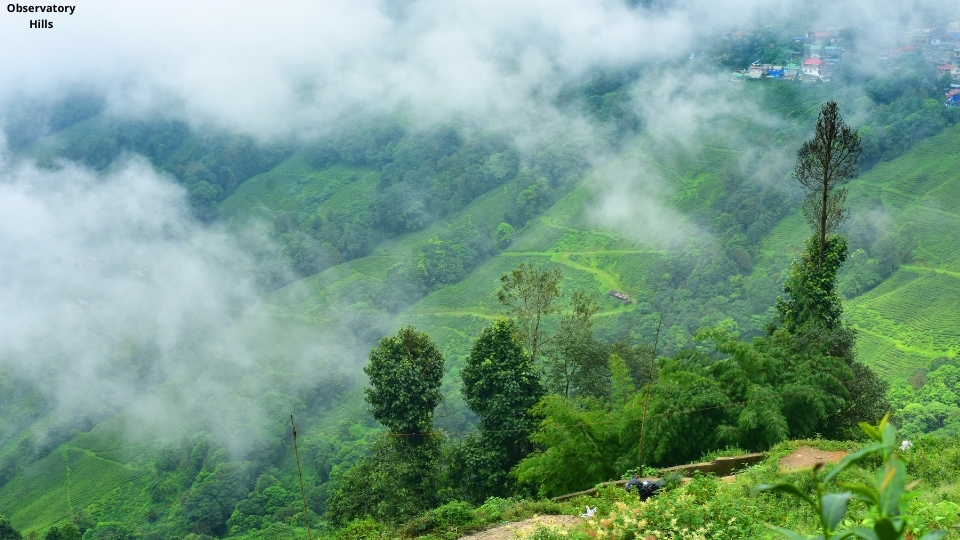
Observatory Hill is a holy place located in Darjeeling that provides a mesmerizing view of the Kanchenjunga range. It has a temple of Mahakal — the only temple in the world that is worshiped by Hindus as well as Buddhists.
Why Visit?
- This is the perfect combination of spirituality with natural beauty.
- Provides a tranquil refuge from the active town.
10. Ghoom Monastery – Experience Tibetan Buddhism
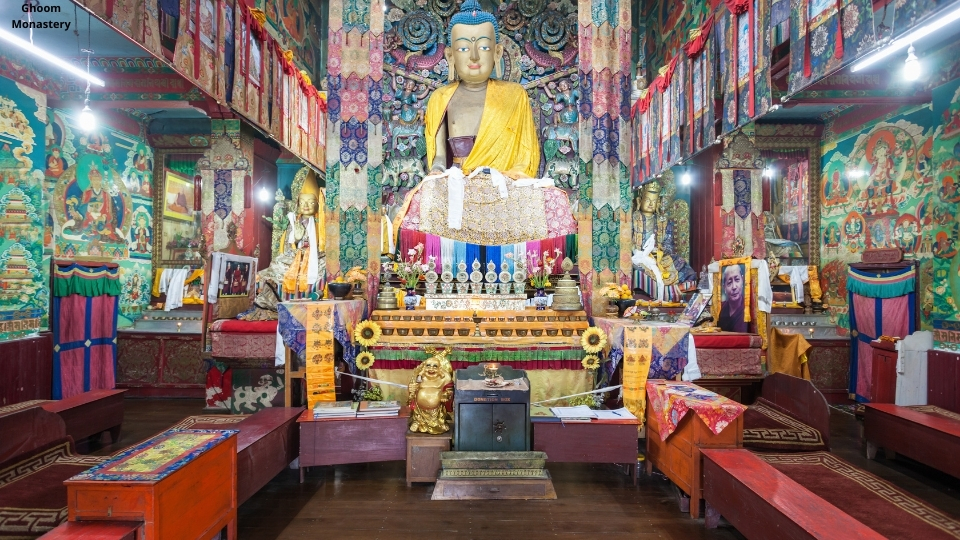
Ghoom Monastery (Yiga Choeling Monastery), one of the oldest Tibetan Buddhist monasteries in Darjeeling, is known for its 15-foot-high Maitreya Buddha statue and murals.
Why Visit?
- Provides a very tranquil environment for meditation or spiritual experience.
- See ancient manuscripts and Buddhist artifacts.
11. Sandakphu – The Highest Point in West Bengal
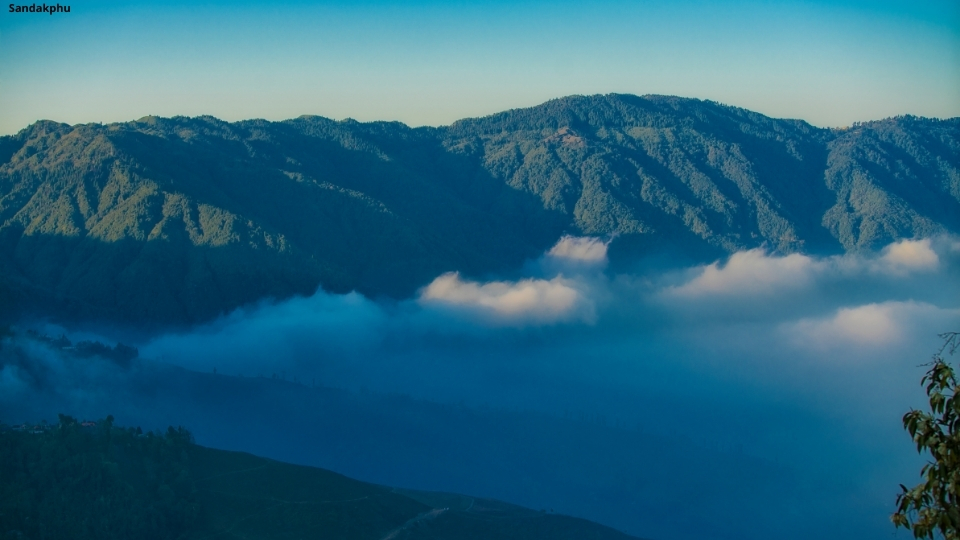
Sandakphu, which lies at an elevation of 3636 meters, is the highest peak in West Bengal, affording scenic views of the four highest peaks of the world – Mount Everest, Kanchenjunga, Lhotse, and Makalu. There’s something for everyone in the family, including trekkers and nature lovers.
• Best Time to Visit: October to April
• Activities: Trekking, camping, nature photography
12. Singalila National Park – A Beuty of Mother Nature
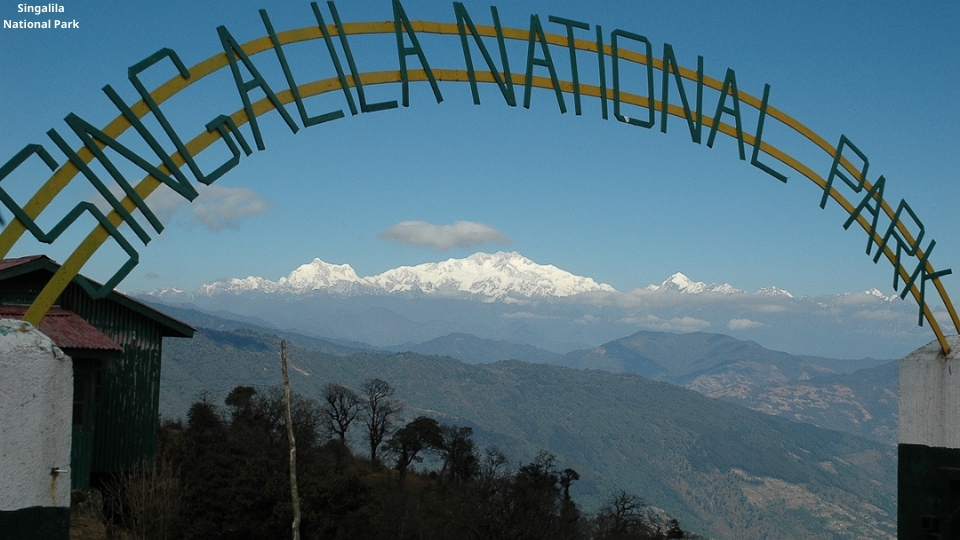
Singalila National Park, Located in the vicinity of Sandakphu, is the habitat for the elusive Red Panda, Himalayan Black Bear, and Clouded Leopard. Also, this park is considered the country’s best bird-watching site.
• Best Time to Visit: March to May & September to December
• Activities: Wildlife safari, birdwatching, trekking
13. Tinchuley – One of the Greatest Discoveries Near Darjeeling
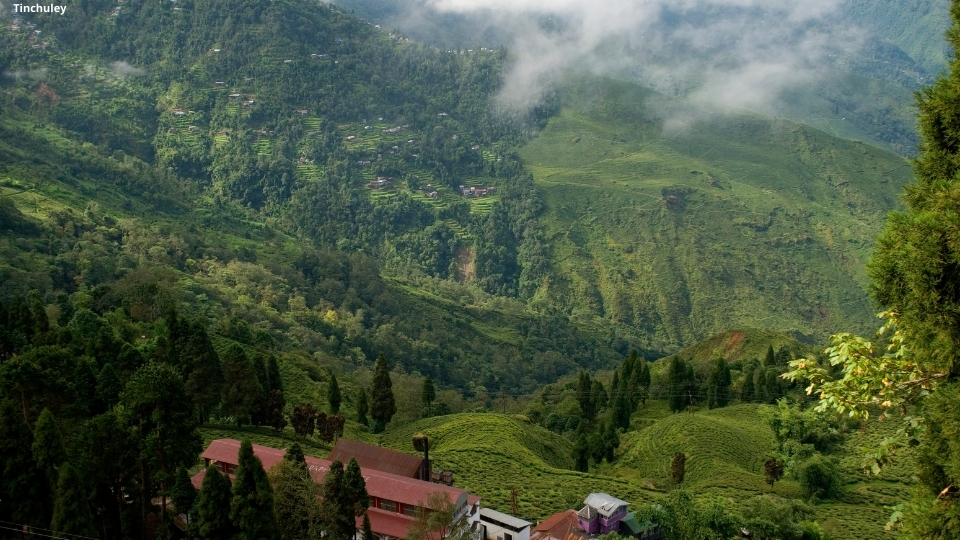
Unlike many other villages that have been commercialized, Tinchuley is quiet, and as a consequence, allows for stunning views of the Kanchenjunga mountains, tea gardens, and Orange orchards. Ideal place for a person who is searching for peace and solitude.
• Best Time to Visit: October to March
• Activities: Village walks, homestays, tea garden visits
14. Lamahatta – A Quiet Spot for Eco-Tourism Lovers
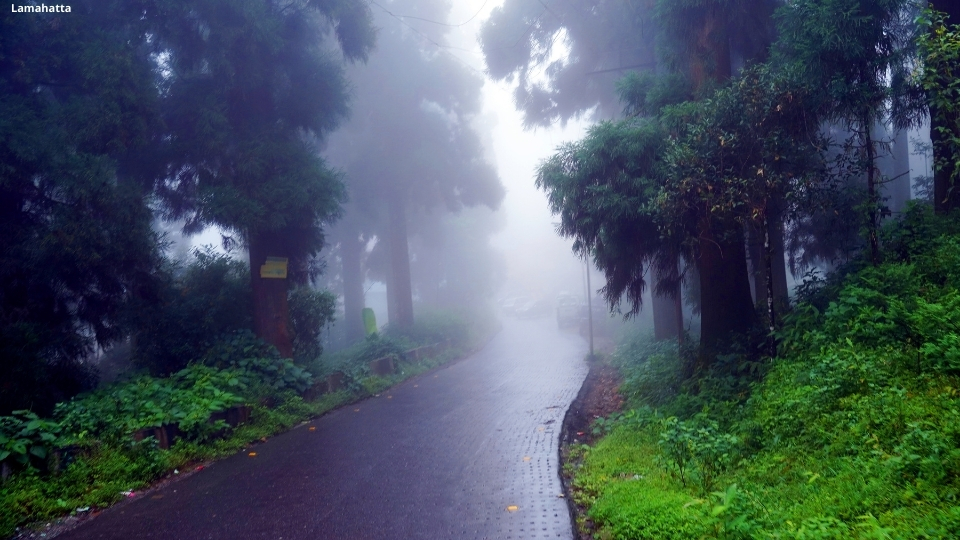
Lamahatta is an eco-tourism village set among pines 23 km away from Darjeeling. It is surrounded by rivers and towering mountains. Perfect for nature and newlyweds.
• Best Time to Visit: All year round
• Activities: Nature trails, camping, monastery visits
15. Mirik – A Serene Lake Town
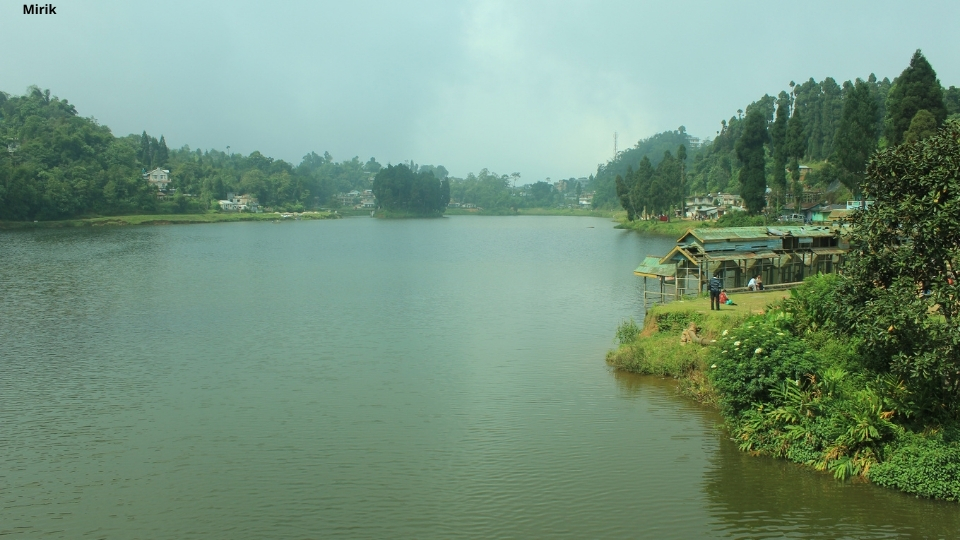
Mirik bestows its attention to Sumendu Lake, orange orchids, and Buddhist monasteries and is located 49 km from Darjeeling. Given the serene setting, it deserves a day trip.
• Best Time to Visit: October to March
• Activities: Boating, horse riding, exploring tea gardens
16. Lepchajagat – A Paradise for Nature Lovers

This small and secluded village, about 19 km from Darjeeling, is encased in dense pine, oak, and rhododendron forests and offers a panoramic sight of Kanchenjunga. This is recommended for offbeat travelers.
• Best Time to Visit: October to March
• Activities: Birdwatching, nature walks, photography
17. Kalimpong – A Blend of Culture & Adventur
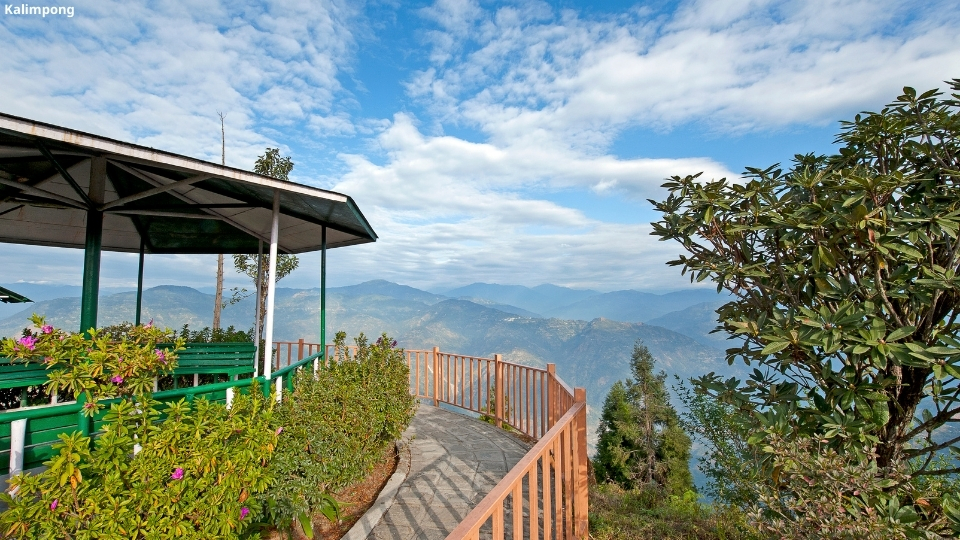
Situated 50 km from Darjeeling, Kalimpong is famous for its Buddhist monasteries, colonial churches, and orchid nurseries. There are also adventure activities like paragliding and river rafting.
• Best Time to Visit: March to May & September to December
• Activities: Viewing monasteries, paragliding, and buying local crafts.
18. Takdah – An Idyllic British Era Cantonment.
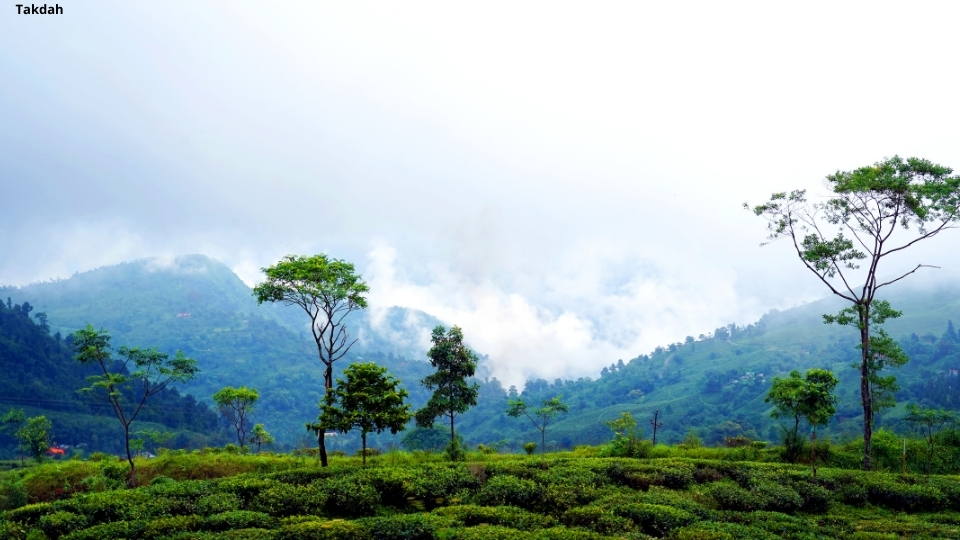
Takdah is a picturesque quiet hill station in Darjeeling, famous for misty bungalows, beautiful tea estates, and closed forests. This hill station is of great location for a history lover and tea admirer.
• Best Time to Visit: October to March
• Activities: Heritage walks, tea tasting, hiking
19. Mongpu- Summer Retreat Of Tagore.
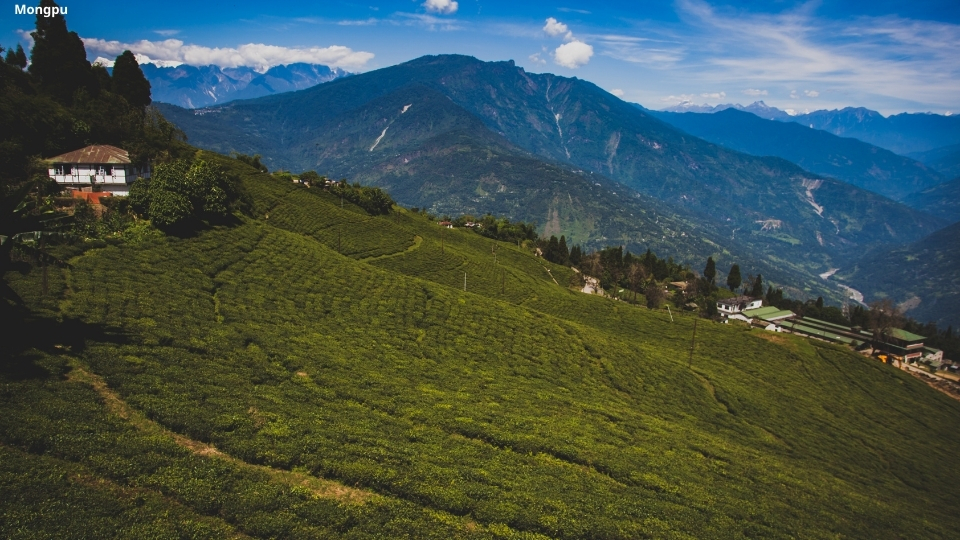
Mongpu is a picturesque hamlet near Darjeeling which was frequently visited by Rabindranath Tagore. This village has a beautiful Cinchona plantation and a breathtaking Teesta River.
• Best Time to Visit: October to May
• Activities: Visiting Tagore’s Bungalow, exploring tea and Cichona plantation.
20. Neora Valley National Park- Wonder of Wildlife.
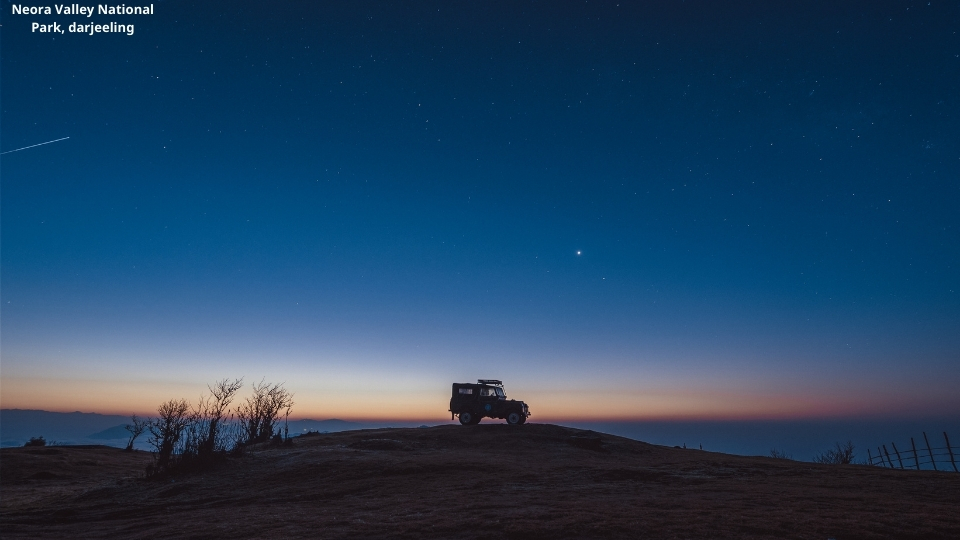
Situated near Kalimpong, this National park comprises of thick forest where the elusive Red Panda can be spotted. This place is a hotspot for biodiversity.
• Best Time to Visit: March to May & October to December
• Activities: Wildlife safari, bird watching, and jungle trekking.
Offbeat Experiences: Beyond the Tourist Trail
Darjeeling is a small hill station tourists visit to see three safe points in Darjeeling which happen to be Tiger Hill, Batasia Loop & Mall Road. If you’re looking to venture beyond the typical tourist spots, here are some offbeat experiences to help make your trip truly memorable.
Use the Tea Gardens that are not Tourist-Infested
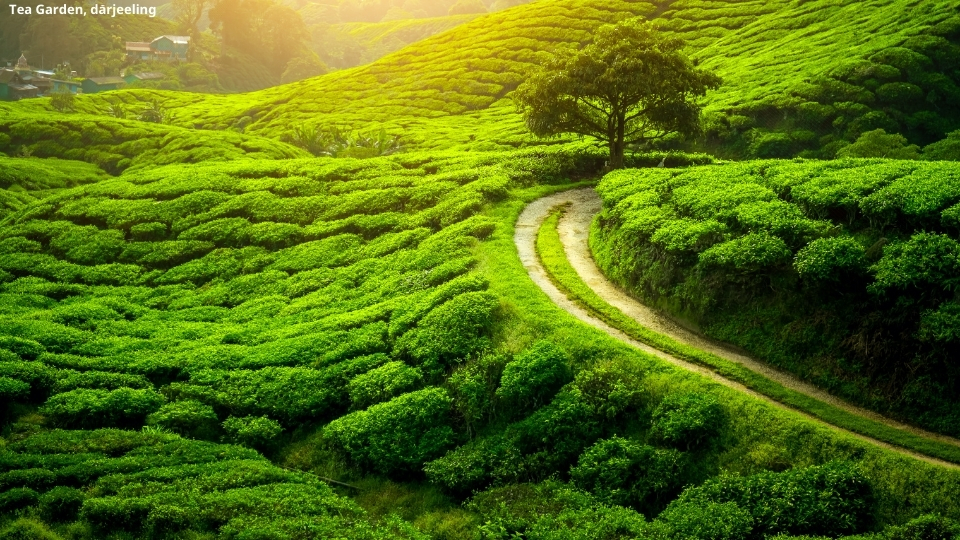
Tea gardens in Britain — Happy Valley, Makaibari, et al, though are quite well known — are filled with tourists, those will be a place for another time, rather a less explored and not-so-crowded tea garden is where to be.
Offbeat Tea Gardens to Visit:
- Singtom Tea Estate – Into the nostalgic era of one of the oldest tea garden stay in a colonial bungalow.
- Gopaldhara Tea Estate – Famous for its open-view gardens and high-class Darjeeling tea.
- Tumsong Tea Retreat – (Meeting tea-plucking women and the tea-tasting place in isolation.
Instead of just buying tea in the shops, take a guided tour of these gardens and learn about the tea-making process from plucking the leaves to processing them into fine blends.
Tinchuley and Lamahatta Villages
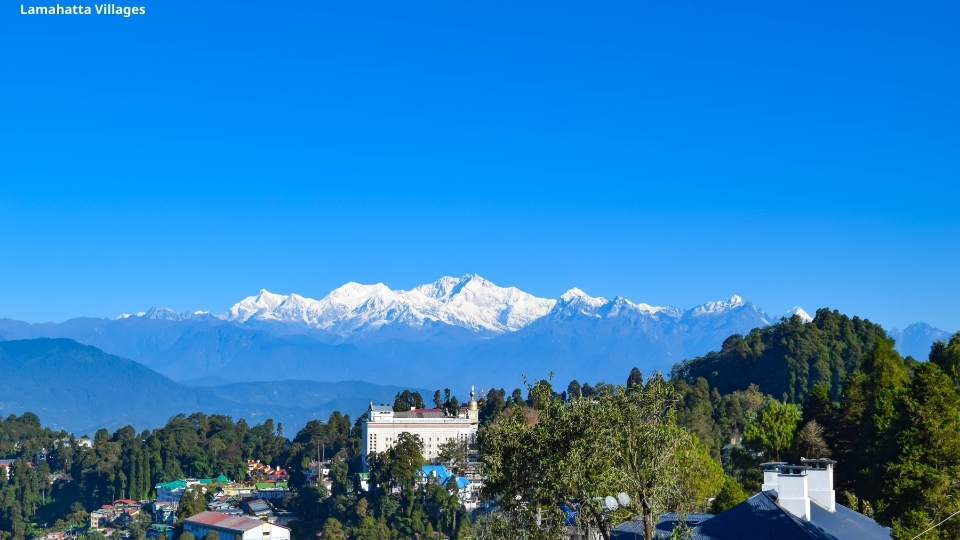
Nature Abound Quiet Offbeat Near Darjeeling Tinchuley and Lamahatta Naturally shanti shanti place; Perfect little offbeat destination
- Tinchuley – Peaceful hamlet with homestays overlooking the Himalayas. You may also visit orange orchards and organic farms in the vicinity.
- Lamahatta – Famous for pine forests, landscaped gardens, and views. A peaceful nature trail here leads to holy lakes insulated from commercial tourism.
Join a Yak Safari in Tumling

While tourists flock to the regular sightseeing tours, an alternative way to see the landscape is exploring the area on the back of a yak in Tumling. Located along the Sandakphu trekking route in Darjeeling, Tumling is a small village where you can soak in gorgeous views of the Kanchenjunga range. Trek the rugged trails and experience highland living on a yak safari for a truly unique voyage.
Chatakpur Eco-Stay: Hike it Up
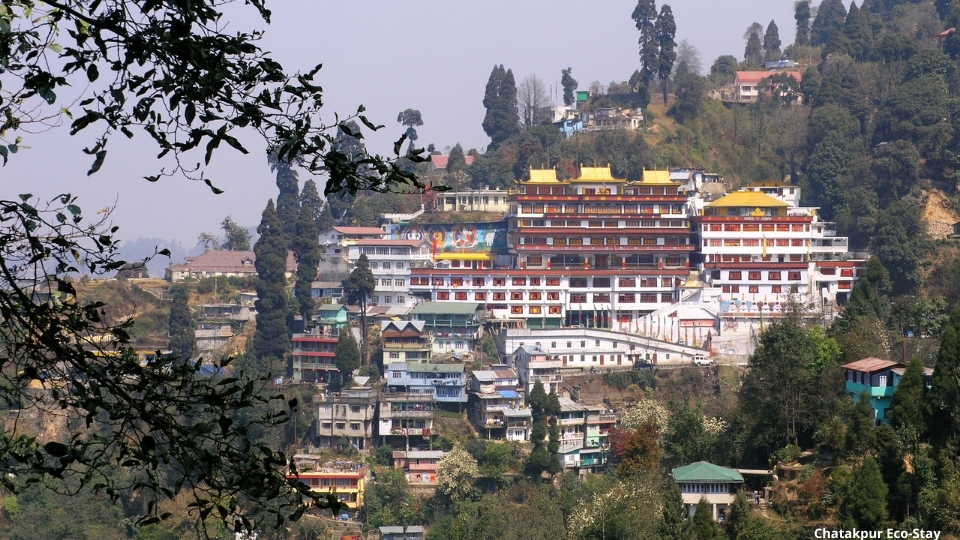
Nestled in the Senchal Wild Life Sanctuary, Chatakpur, a quaint eco-village is among the lesser-known yet amazing things in Darjeeling. You can get to this hidden paradise with a short hike or a drive from Darjeeling.
Why visit Chatakpur?
- Spectacular sunrise views of Mount Kanchenjunga — which some people claim rival the overhyped view at nearby Tiger Hill, but none of the crowds.
- Organic food 12. Forbid classy residence haunted places run owned your experience.
- Good for bird watching with plus species like the Himalayan Monal(Wild Cock) (The state bird of Nepal).
The unspoiled beauty of Lepchajagat

It’s one of the perfect hamlets where you could indulge in the serenity away from commercialization. It is located at a distance of only 19 km from Darjeeling. It is enveloped by thick pine woods and offers one of the best-unbroken views of the Himalayas.
Why visit Lepchajagat?
- A peaceful getaway from the tourist crowds.
- A first experience of local Lepcha culture.
- Very little light pollution so perfect for stargazing.
Hiking the Ghoom Rock and Bunkulung Offbeat Trails
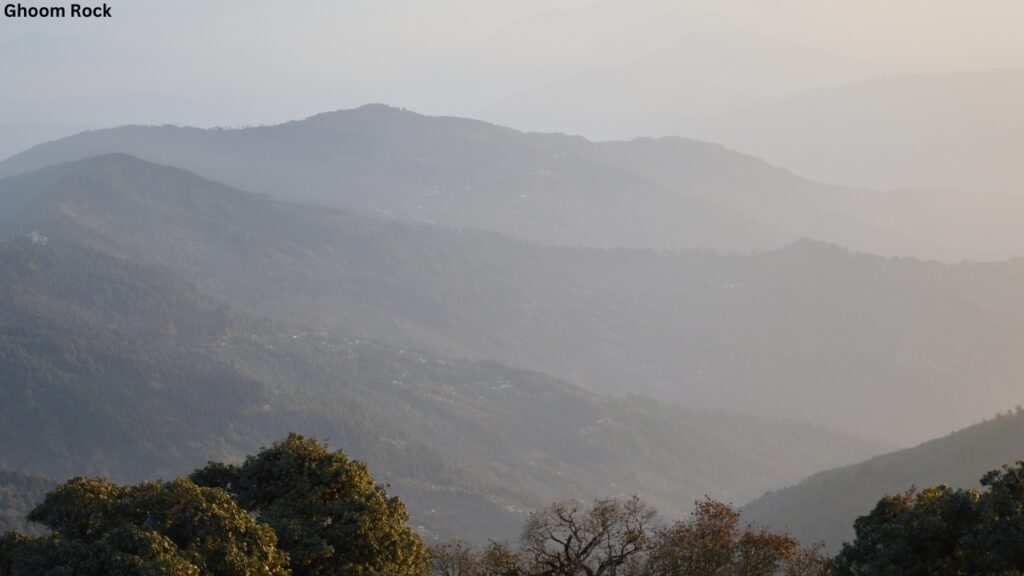
Ghoom Rock – An unexplored viewpoint near the popular nearby Ghoom Monastery. It not only has the best view of the valley but also gets you away from the crowd at most touristy viewpoints like Batasia Loop.
Bunkulung – A picturesque village (close to Mirik) perfect for camping, trout fishing, and exploring organic farms
These places show a different side of Darjeeling void of mass tourism.”
Take a Secret Monastery Trail
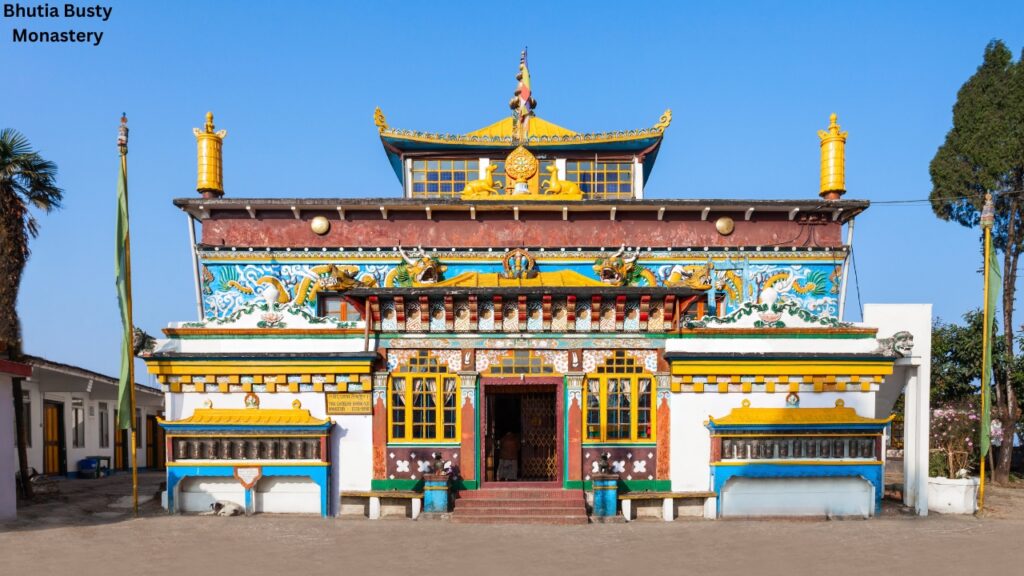
Skip the famous Ghoom Monastery, and visit one of these smaller Buddhist monasteries where you can feel the peace and spirituality.
- Yolmowa Monastery – Hidden Tibetan Buddhist Monastery in Darjeeling
- Dali Monastery – A peaceful spot here, an opportunity for meeting monks and sharing the morning prayers.
- Bhutia Busty Monastery – Darjeeling’s oldest monastery where one can see mesmerizing views of the valley.
These monasteries are often overlooked by tourists and thus, are perfect venues for meditation and reflection.
Taste Traditional Darjeeling Cuisine With a Local Homestay
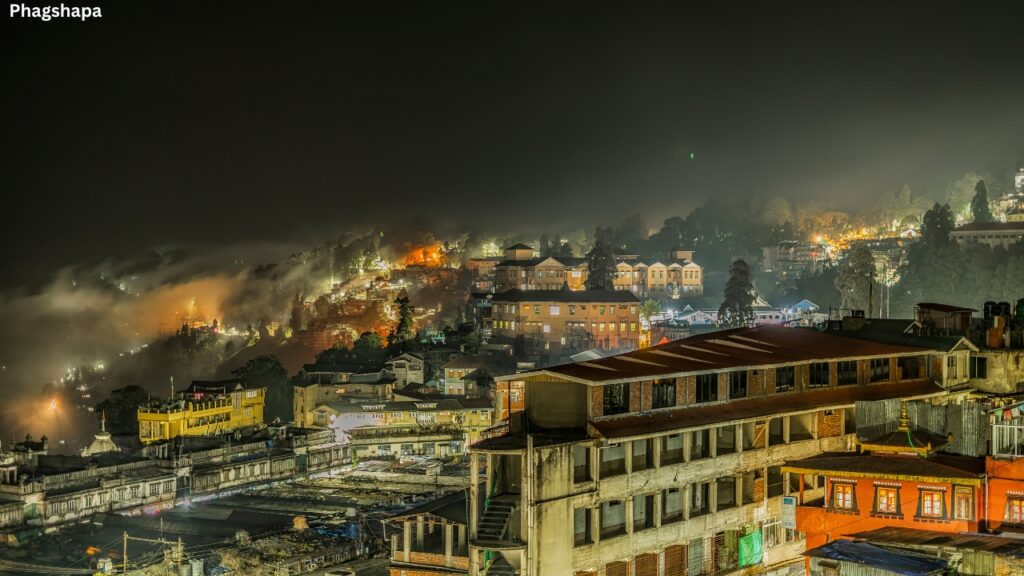
Instead of eating at typical restaurants, taste traditional Nepali, Tibetan, and Lepcha dishes at a homestay or local kitchen.
What to try:
- Phagshapa – A not-to-be-missed pork dish flavored with dry chilies & radish
- Gundruk — Fermented leafy greens that are dried, a staple of the area’s diet.
- Sael Roti — Nepali-style rice doughnut [dish, origin].
A local favorite yak cheese snack. Dining at a local homestay will give you an authentic taste of Darjeeling’s multiethnic food culture.
Dhotrey Or Tonglu: Camp Under The Stars

The one you can do is great — Dhotrey or Tonglu good for trails. Located on the Sandakphu trek route, the village offers a view of the Himalayas.
Why camp here?
- Get close to nature in its pure, unadulterated form, away from the commercial hotel resorts.
- Embrace the night sky, sparkling thousands of Stars.
- Savor the relatively calm following the storm and wake up to views like the sunrise over Mt. Everest and Kanchenjunga.
- For such travelers eager for a more home-like feel along with heartfelt hospitality, there are homestays.
Get an aerial view of the tea gardens by taking a cable car (Darjeeling Ropeway)
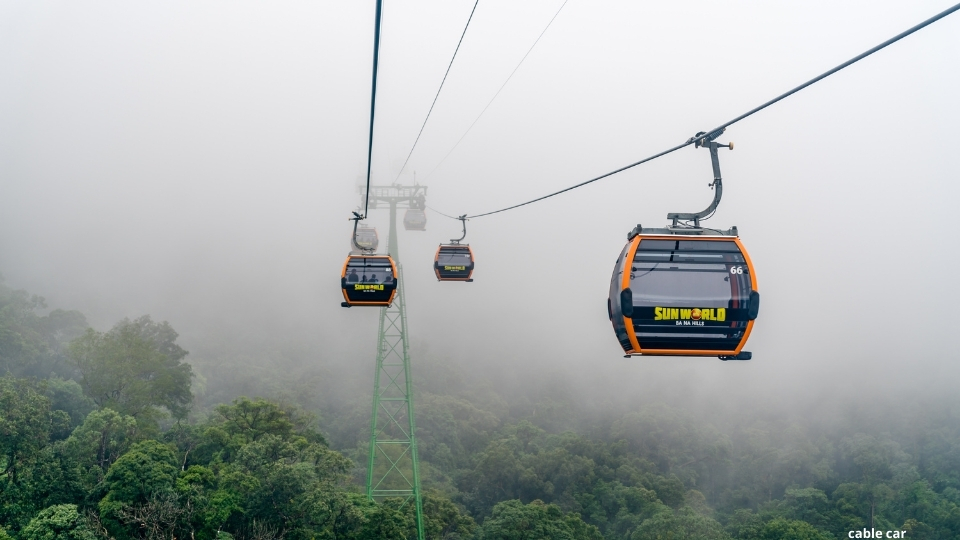
While most people do a road trip around the tea gardens, Darjeeling Ropeway offers a captivating bird’s-eye view of the lush tea estates.
Why take the ropeway?
- Ground yourself in the bird’s-eye perspective of the rolling hills and valleys of Darjeeling.
- The ride is one of the longest cable cars in Asia.
- Tea estates make for gorgeous snaps from above.
So ladies, photographers, nature lovers, and whoever is looking for an out-of-the-box way of soaking in the beauty of Darjeeling, this is a must!
When to Visit Darjeeling: Seasonal Guide
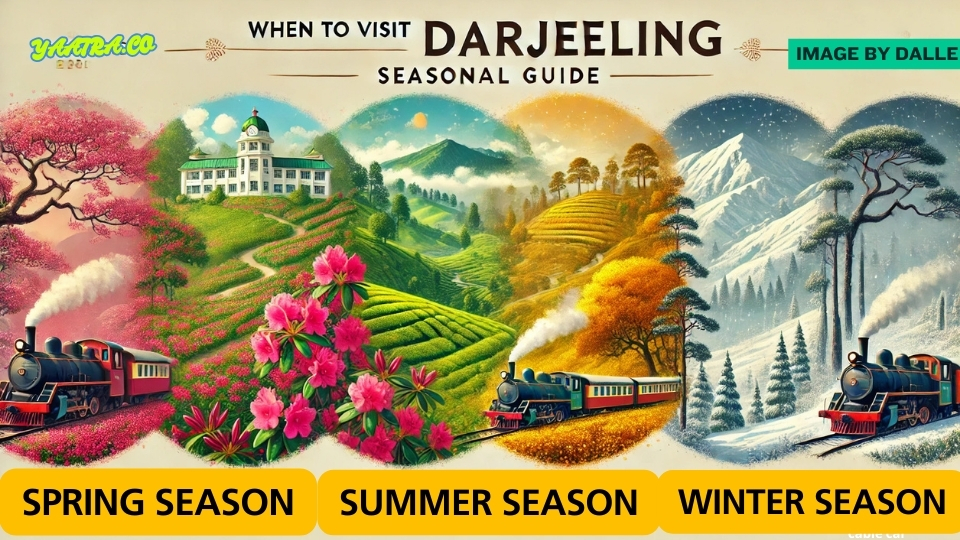
The city of Darjeeling, popularly known as the “Queen of the Hills”, is a year-round destination with each season boasting a unique experience. So, depending on whether you are looking for misty mountains, colorful festivals, or adventure activities, knowing about the seasonal highlights of Darjeeling is sure to help you plan the perfect trip. Here’s a guide to what each season includes:
Spring (March-May): Blossoms & Mild Weather
Spring is one of the peak times to visit Darjeeling: the season is pleasant, and nature is at its vibrant best. 10°C as well as 20°C and ideal for sightseeing, and trekking in addition to panoramic views of Kanchenjunga.
- Highlights:
Blooming Rhododendron and Magnolias, clear skies with excellent mountain views, and good conditions for trekking and outdoor activities.
Events & Festivals: Basant Panchami and Holi are celebrated and the spring season is the best time to see the tea gardens of Darjeeling, held at its greenest phase.
Summer (June to August): LushScenery & Rainy Escapes
Summer in Bhutan (May to August) entails a mixture of beautiful weather and heavy downpours, with temperatures generally hovering around 15°C to 25°C. While technically monsoon season, the lush green landscape and minimized crowds provide a peaceful escape for nature enthusiasts.
- Best known for: Rejuvenating its tea garden tour with fewer tourists and beautiful misty landscapes.
- Events & Festivals: Buddha Purnima is celebrated with great zeal at several monasteries in Darjeeling.
- Travel Tip: Bring rain gear and be ready for occasional disruption of travel due to landslides during intense rain.
Autumn (September to November): Cool Air & Festive Feels
Autumn is considered the best time to go to Darjeeling. The monsoon departs and we are left with clear-blue skies, the freshest air, and stunning views of our mountains. The weather is between 10°C and 18°C.
- Highlight: Beautiful sunrises from Tiger Hill, unobstructed views of Mount Kanchenjunga, and cozy weather for adventure activities like trekking and paragliding
- Events & Festivals: Durga Puja, Diwali, and Tihar (Nepali festival) are when Darjeeling is alive with lights, music, and cultural performances.
Winter (December to February): Glacial Summits & Snuggly Escapes
For people who adore cold weather and peaceful snow-covered landscapes, winter in Darjeeling is a dream. And while snowfall in Darjeeling town is rare, the hills that surround the hill station boards remain snow-capped, with temperatures falling down to 2°C – 10°C during the month.
- Highlights: Scenic views but massive cold, best-flavored tea and tea estates, colonial style hotel with wood fireplaces.
- Events & Festivals: The Christmas and New Year celebrations add to the festival atmosphere, while the Tibetan New Year (Losar) in February is a festive cultural experience.
- Travel Tip: Bring warm clothes, as temperatures can fluctuate sharply at night.
Ultimate Travel Tips for a Hassle-Free Journey
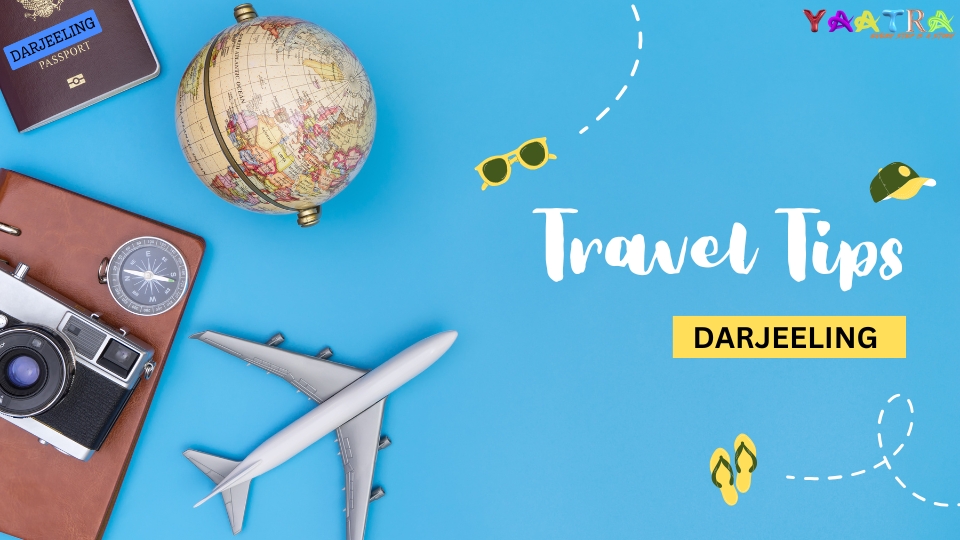
Unlike in a previous excursion, I knew a few tricks up my sleeve to help sugar-coat the experience of traveling. Whether it’s your first trip or your 50th, a little planning and savvy choices can go a long way. Traveling can be stressful enough, so here are a few tips to keep in mind to stay healthy and happy wherever you go.
Plan Your Trip in Advance
Research Your Destination
Do your homework as soon as you travel! Gather all the info you can about where you will be going, including local culture, weather, currency, transportation, and must-see sights. This will assist you in making preparations accordingly and avoid having something new to deal with at the last minute.
Create a Flexible Itinerary
An itinerary is helpful to have but leaves space for surprises. Don’t try to see everything. You will burn out and want to balance must-see sights with some downtime.
Pack Smart
Make a Packing List
List out all the important things you need to take so that you do not forget anything in haste. Organizing your luggage according to the length of your trip and its activities makes sure you don’t take what you don’t need.
The 3-1-1 Rule for Carry-On Liquids
If taking a plane, observe the TSA’s 3-1-1 rule: liquids, gels, and aerosols should be in 3.4-ounce (100ml) bottles or smaller, packed in a single quart-sized clear resealable bag.
Use Packing Cubes
Packing cubes are great for keeping your stuff organized and saving space in your suitcase — not to mention that these make it easier to find your stuff as well.
Carry Essential Documents
And make sure your passport, visa (if necessary), travel insurance, hotel reservations, and emergency contact information are all set to go. Make backups with digital copies.
Travel Safely
Be Aware of Your Environment
In crowded spaces, look after your belongings and be aware of your surroundings. Pickpockets frequently prey on tourists in crowded areas.
Wear a Money Belt or Anti-Theft Bag
Having cash, cards, and important documents secured can help avoid theft or loss. Money belts and RFID-blocking wallets provide an extra layer of protection.
Get Travel Insurance
Things like medical emergencies, flight cancellations, or lost luggage can arise unexpectedly. Travel insurance offers financial protection and peace of mind.
Save Money While Traveling
Plan Your Flights and Accommodations Early
Flights and hotels are usually cheaper through early bookings. Search for the best rates on price comparison websites and travel apps.
Use Public Transport
Using public transportation (rather than taxis) can save money and offer a more authentic local experience.
Look for Free Attractions
There are plenty of free walking tours, museums, and cultural experiences in most cities. Look for no-cost or low-cost things to do where you’re going.
Stay Healthy and Energized
Stay Hydrated
Whether arriving at a new destination or withstanding long travel days, they can be tiring — and far more so in hot weather. Bring a reusable water bottle and hydrate.
Eat Local but Be Cautious
Eating the local cuisine is one of the best parts of traveling, but avoid street food that looks unsanitary. You should eat at busy food stalls with good reviews.
Get Enough Sleep
Different time zones make things slightly difficult to adapt. During your travels, make an effort to sleep close to a full night, and take spurts at naps if you need a boost!
Make the Most of Your Trip
Learn Basic Local Phrases
Speaking a little of the native tongue can enrich your travel experience, help you communicate with locals and make connections, and find out what to practice before you travel.
Take Pictures, But Enjoy the Moment
Snap pictures and videos, but don’t lose sight of having a good time outside the phone lens. Especially at times when you are fully present.
Be Open to New Experiences
Be experimental — whether it’s trying an outlandish new dish, signing up for an adventure sport, or going on an impromptu trip.
Darjeeling Food: A Tour to a Variety of Cuisines
Tucked deep into the foothills of the Himalayas, Darjeeling is known not just for its beautiful views and colonial history but for its wide, delicious food culture, too. The food of Darjeeling is as much a testimony of its colorful multi-ethnic populace as of its Nepali, Tibetan, and Bengali influences. Street food or traditional food, gourmet food or budget food, find anything you crave here. Here is a guide about some of the delicious food you can eat in this hill station.
Momos (Tibetan Dumplings)
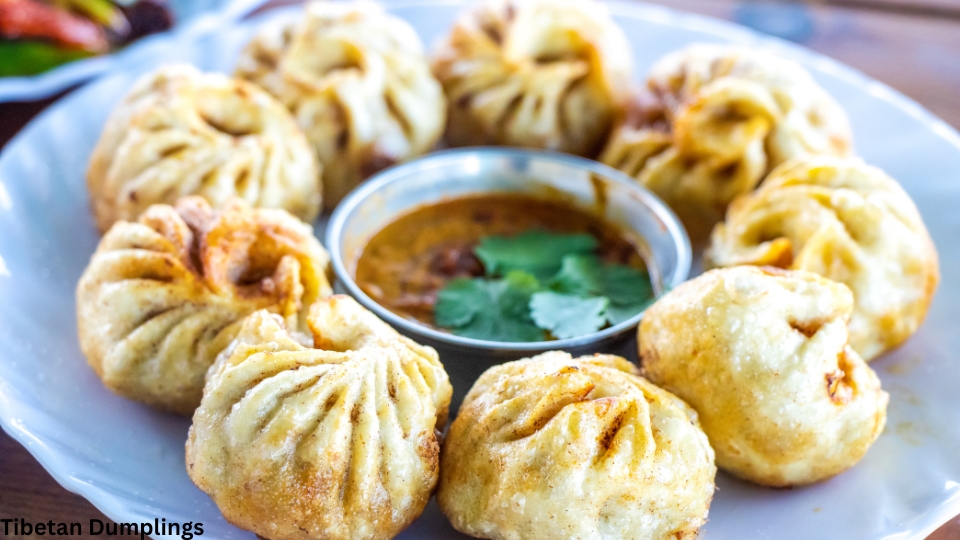
And, of course, a trip to Darjeeling won’t be complete without a taste of momos, a popular snack that is originally from Tibet but has cemented itself as a staple food in this part of India. Steamed or fried these dumplings usually contain minced chicken, pork, or beef, but there are many vegetarian-friendly options available as well. They are frequently accompanied by a spicy dipping sauce that enhances the overall taste profile.
Thukpa (Tibetan Soup)
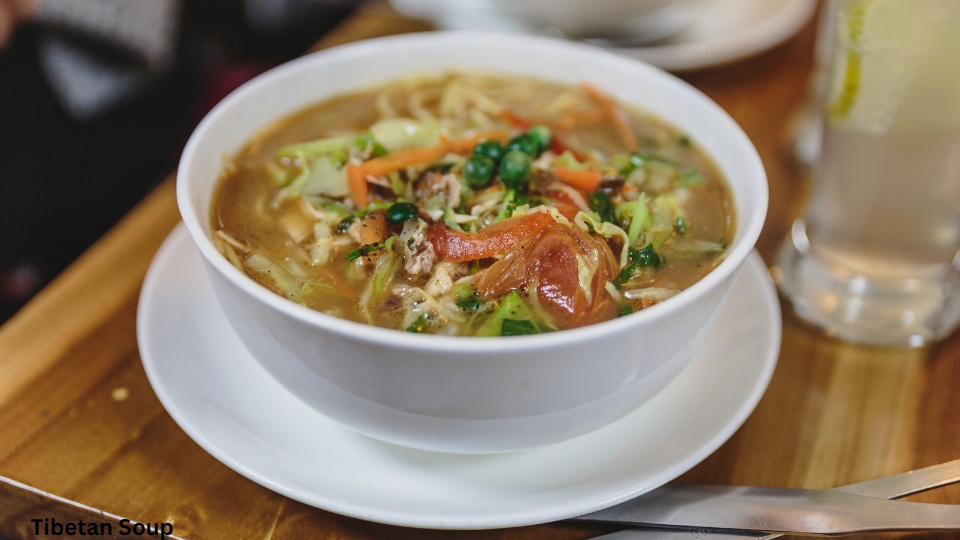
Thukpa is a robust noodle soup that originates in Tibet, but that has taken hold in a big way in Darjeeling. The broth is clear, with vegetables, meat, and noodles for a nutritious, wholesome meal. It’s ideal for the hill station’s chilly weather and provides a warming, flavorful experience.
Chowmein
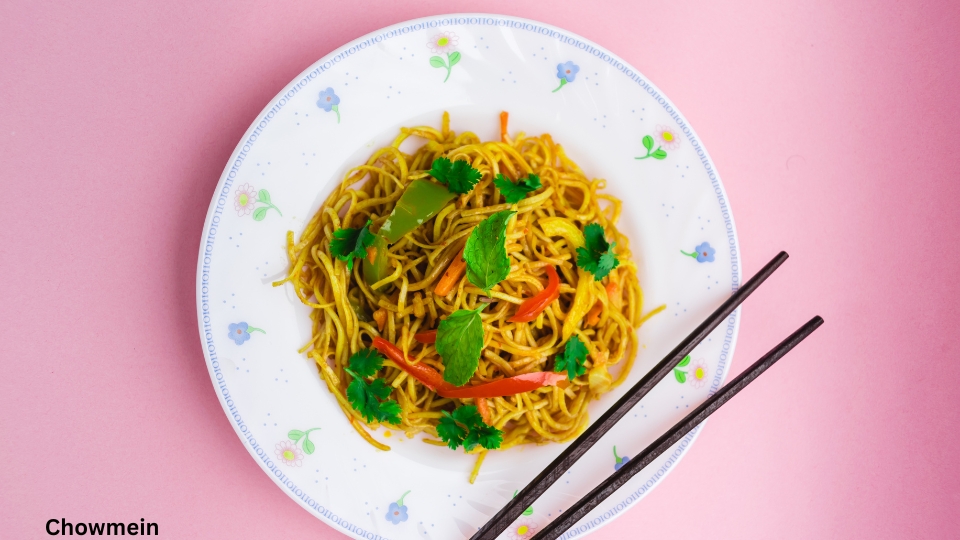
Inspired by Chinese cooks, chow mein is a popular street food in Darjeeling. Stir-fried noodles, vegetables, and either chicken or pork, the crunchy, savory goodness of this dish is amazing. It is often served in haste as a snack for people on the run and found practically everywhere at local eateries.
Sel Roti

Sel roti, a doughnut made up of rice, is a typical Nepali food that is often eaten during festivals and events. It’s a deep-fried fritter made with rice flour, sugar , and yogurt, and just golden delicious. Its crispy surface and soft chewy inside is a great combination, perfect accompanied with a cup of Darjeeling tea.
Gundruk

Gundruk is a Negotiated leafy vegetable dish that is a Lexicon in Nepali cooking. It is produced by fermenting mustard leaves, spinach, and other green vegetables. The tangy taste of chutney makes it a perfect side dish with rice and dal.
Dal Bhat (Lentils and Rice)
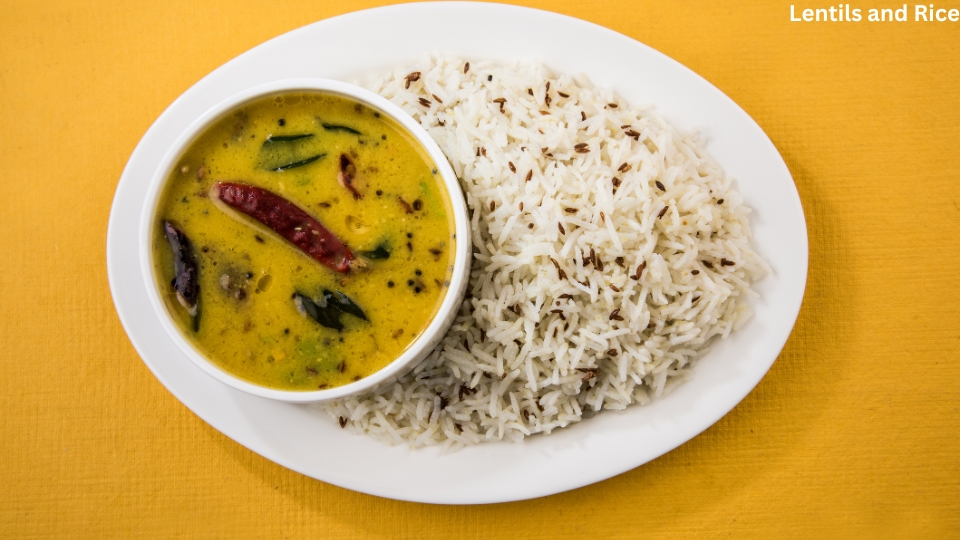
Darjeeling food cultureThe quintessential dish in Darjeeling food is Dal Bhat. This no-frills, no-fuss, actually-divine dish is a plate of dal (lentils cooked with spices) eaten with steamed rice — and usually with vegetable curries, pickles, and occasionally meat. It’s a hearty and wholesome meal that reflects the regional comfort food.
Churpee

Churpee — a yak milk-based fermented and dried snack whose chewy, cheese-like consistency comes in both salty and sweet forms. Due to its high level of popularity in the Himalayan region, it is often used as a snack with tea. Churpee is commonly consumed as a savory treat and is rich in protein.
Aloo Dum

Aloo Dum is a spiced potato preparation that is a perfect representation of the Bengali influence on Darjeeling’s food culture. It is a stew of baby potatoes in a tangy and spicy mixture that is served with paratha or rice. Food lovers are particularly drawn to this dish because of its rich and aromatic gravy.
Sikkimese Tsampa

Tsampa: Tsampa, roasted barley flour, is a traditional dish of Sikkim and is usually eaten with butter, milk, and sugar. In Darjeeling, it is often eaten at breakfast or as a snack. It gives you a boost in the morning as tsampa is a nutty wholesome food full of nutrients.
Darjeeling Tea
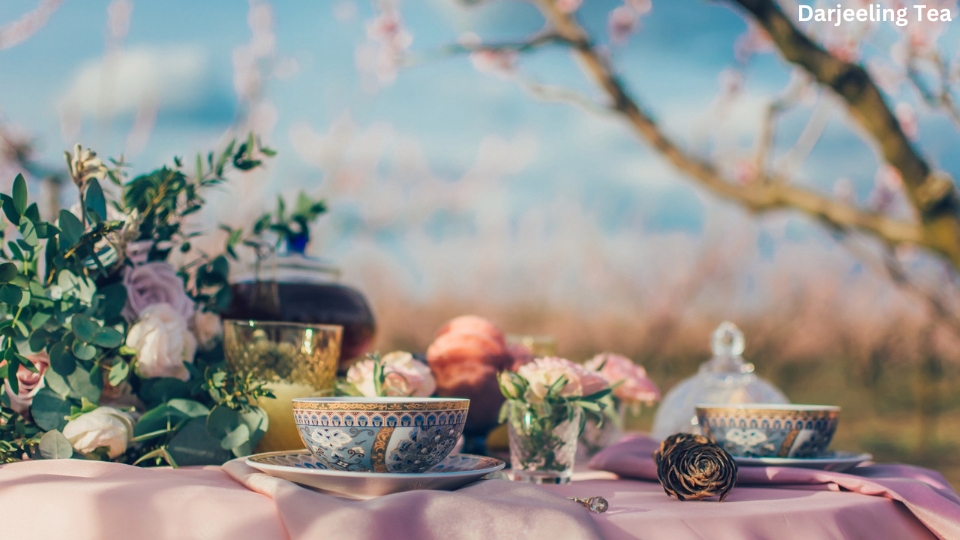
Darjeeling tea is more of a beverage than food, but is very much part of the local food culture. Said to be the “Champagne of Teas,” Darjeeling tea is produced in this region’s specific climate resulting in a one-of-a-kind taste. Be it black or green or with milk, Darjeeling tea is an ideal drink to ease out your day of exploring the town.
Getting Around Darjeeling
Once you arrive in Darjeeling, it’s fairly easy to get around. The town is small, and some local transport options are:
Local taxis Private taxis (USE YOUR GOOD JUDGEMENT): Local taxis are available for sightseeing and to get you in and out of the town. They can be rented for half-day trips or full-day tours.
Shared Jeeps: Travelling to locations nearby like the Batasia Loop or Tiger Hill, shared jeeps are a common option among many at affordable rates.
Walking: Due to the small size of Darjeeling, walking is one of the best ways to see the town’s colonial architecture, tea gardens, and local markets.
How to Reach Darjeeling: A Complete Guide

Located in West Bengal is the scenic hill station of Darjeeling, which is a popular travel destination that boasts beautiful views of the Kanchenjunga, tea plantations, and colonial charm. Being located in the north-eastern region of India, preparing your travel plans is a must especially if you are looking to head for a tranquil retreat or an adventurous escape to the hills. This article will help you to know the different ways to reach Darjeeling so that you can have the most comfortable journey.
By Air: The Nearest Airport
Bagdogra Airport (IXB) is the closest airport to Darjeeling, situated approximately 95 km away from the hill station. There is a domestic airport in Bagdogra that connects to major cities of India such as Kolkata, Delhi, and Guwahati also with international access.
Bagdogra Airport to Darjeeling: After landing at Bagdogra, you can hire a taxi that will take about 3 to 4 hours to reach Darjeeling depending on the condition of the roads. In addition, there are shared cabs from the airport.
Toy Train Experience By Train
Reaching Darjeeling by train is a fascinating experience, especially on the DARJEELING HIMALAYAN RAILWAY or Toy Train, a UNESCO World Heritage site. But for Darjeeling, the nearest major railway junction is New Jalpaiguri (NJP) which is 88 km from there.
How to reach Darjeeling from NJP: Once you reach New Jalpaiguri you may book a taxi or can take shared jeeps to reach Darjeeling. Most travel on the road takes 3 to 4 hours. You can travel by Toy Train from NJP to Darjeeling for a more beautiful and nostalgic experience. The train ride is scenic and the journey takes 7 to 8 hours depending on the train and the number of stops along the way, through verdant tea gardens, forests, and small towns.
Another railway station near Darjeeling is Siliguri Junction, and then you can take the above-mentioned route.
By Road: A Scenic Journey
Apart from the previous mode, going by road to visit Darjeeling gives you the chance to enjoy the route and its scenic beauty while susceptible your trip. Darjeeling is connected with several highways which connect with major cities in West Bengal and adjoining states.
From Kolkata: It takes about 12, to 14 hours to reach Darjeeling from Kolkata, which is around 600 Km away. Darjeeling can be reached by either a private car or a state-run/private bus. The road journey is the most picturesque as you will cross through Siliguri and Sukna and then arrive at the hill station.
Siliguri: 80 kilometers away from Darjeeling, Siliguri is an important transitory city and a junction for tourists. It takes about 3 to 4 hours by road between Siliguri to Darjeeling, where you can choose to hire a taxi or take a shared jeep. The journey is where the winding roads and hill stations comes into the picture.
From Gangtok: If you’re arriving from Gangtok (in Sikkim), Darjeeling is some 105 kilometers away. You have to hire a taxi or take a shared cab. It takes 4 to 5 hours to drive along the way, and the road shows stunning mountain views.
By Bus: The Comfortable Omnipresent Affordable
For budget travelers, buses are another easy and cheap way to get there. Darjeeling is well connected with the rest of India via state and private bus operators.
To Darjeeling: The most popular bus route from Siliguri to Darjeeling. At the Siliguri bus terminal, there are both state-run and private buses. It takes approximately 3 to 4 hours.
By bus: Direct buses from Kolkata to Darjeeling are also available. Journey time is approximately 12 to 14 hours depending upon road conditions, with the option for sleeper buses for a more economical and comfortable journey.
Final Thoughts
Darjeeling is an experience that resonates with your soul, and not merely a place. Whether admiring the sunrise over Kanchenjunga with a cup of first-flush tea at hand, trekking through rhododendron forests, or exploring rustic hamlets, the “Queen of the Hills” offers the promise of magic at every turn. Use this guide to plan your visit, and let the timeless allure of Darjeeling work its magic.
“In Darjeeling, the mountains don’t just touch the sky—they touch your heart.”

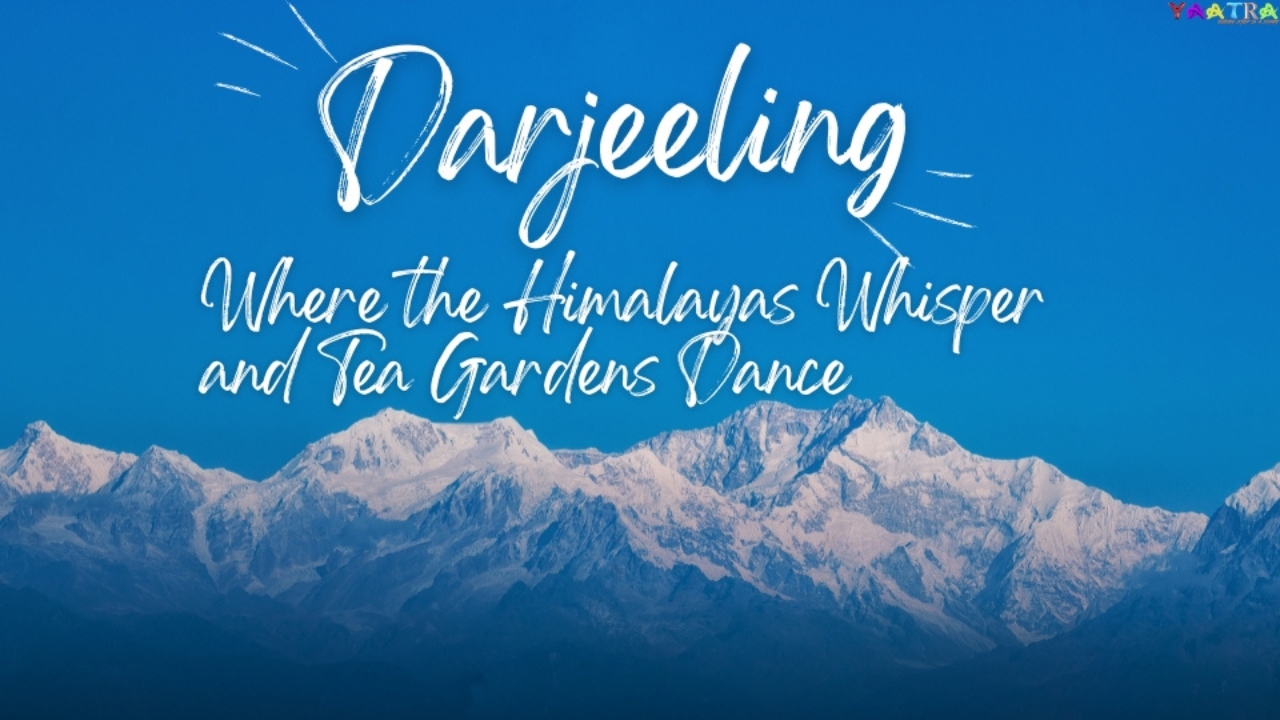

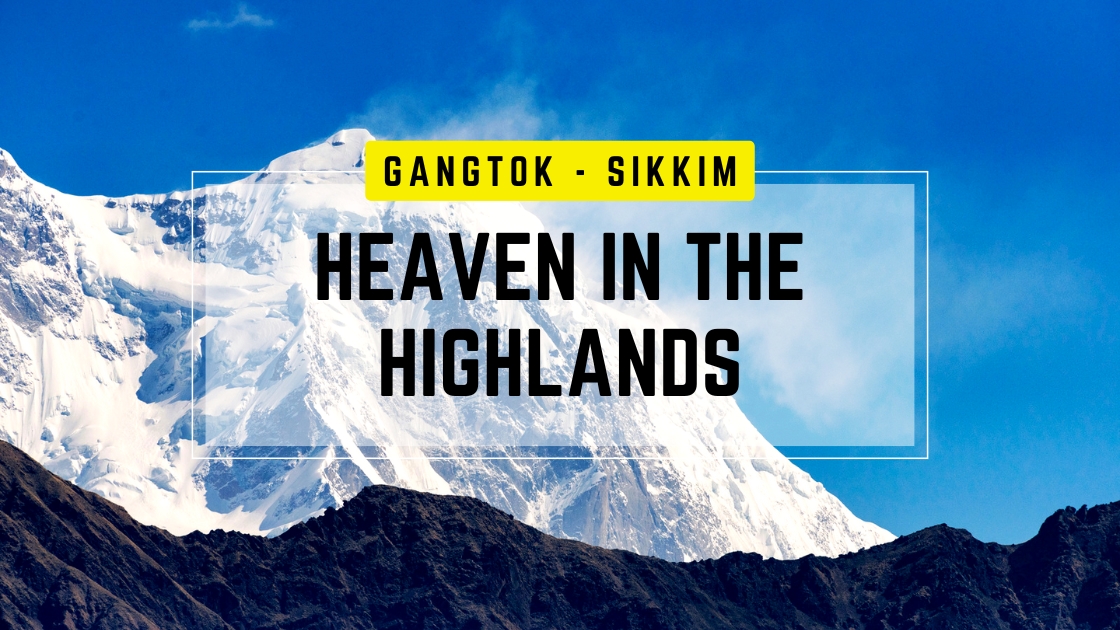




Leave a Reply